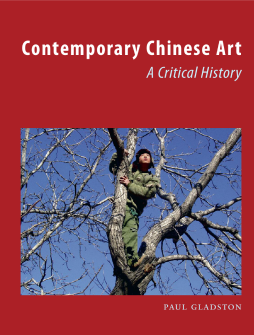
Additional Information
Book Details
Abstract
Since the confirmation of Deng Xiaoping’s policy of Opening and Reform in 1978, the People’s Republic of China has undergone a liberalization of culture that has led to the production of numerous forms of avant-garde, experimental, and museum-based art. With a fast-growing international market and a thriving artistic community, contemporary Chinese art is riding a wave of prosperity, though issues of censorship still abound. Shedding light on the current art scene, Paul Gladston’s Contemporary Chinese Art puts China’s recent artistic output into the context of the wider cultural, economic, and political conditions that surround it.
Providing a critical mapping of ideas and practices that have shaped the development of Chinese art, Gladston shows how these combine to bind it to the structure of power and state both within and outside of China. Focusing principally on art produced by artists from mainland China—including painting, film, video, photography, and performance—he also discusses art created in Taiwan, Hong Kong, Macau, and diasporic communities. Illustrated with 150 images, Contemporary Chinese Art unravels the complexities of politics, artistic practice, and culture in play in China’s art scene.
“Contemporary Chinese Art is an emerging field for academic research and writing. Although much has already been written on the subject particularly in non-academic contexts, there is a need for more searching scholarly analysis and the construction of related critical discourses. Gladston’s book provides a vividly critical account of contemporary Chinese art’s development over the last four decades while situating it carefully in relation to its wider socio-political contexts. Gladston discusses key events in the overall history of modern and contemporary Chinese art based on five years of research in China. He also signposts important possibilities for the further development of contemporary Chinese art. This is a vital book for future excursions in the field of contemporary Chinese art research.”
— Wang Chunchen, Central Academy of Fine Arts
“The leading Chinese artist Wang Guangyi says that Gladston’s Contemporary Chinese Art: A Critical History has an ‘enchanting epic quality.’ The scale and rigour of Gladston’s approach means that Wang’s assessment is largely justified: the book is divided into four sections, with an opening chapter expertly putting Chinese art in context by examining cultural exchanges between China and the West from Antiquity to the mid-twentieth century.”
— Art Newspaper
“Drawing on five years of research in China, Gladston has penned a study of contemporary Chinese art that does far more that run through leading artists and their works. He discusses familiar figures such as Ai Weiwei, as well as lesser-known artists, in the context of Chinese and international politics, examining the sometimes fraught relationship between artists and the state since ‘Opening and Reform’ in 1978.”
— Apollo Magazine
“Gladston’s Contemporary Chinese Art proposes a story of Chinese art through ideas, investigating how artists, theorists, and curators have engaged with the ‘dominant discursive formations’ around them over time. . . . [an] admirable intellectual history.”
— Leap
“Under Gladston’s pen, the complex and sometimes tortuous development of Chinese contemporary art has an enchanting epic quality.”
— Wang Guangyi, artist
“Gladston's narrative is focused on tracing discursive formations that have shaped contemporary Chinese art. In doing so, he offers interventions into and rigorous analysis of existing accounts.”
— Revue Critique D’art
Paul Gladston is the Judith Neilson Chair of Contemporary Art at the University of New South Wales in Sydney the former editor of the Journal of Contemporary Chinese Art. He is the author of Contemporary Art in Shanghai: Conversations with Seven Chinese Artists; 'Avant-garde' Art Groups in China, 1979-1989; and Deconstructing Contemporary Chinese Art: Selected Critical Writings and Conversations.
